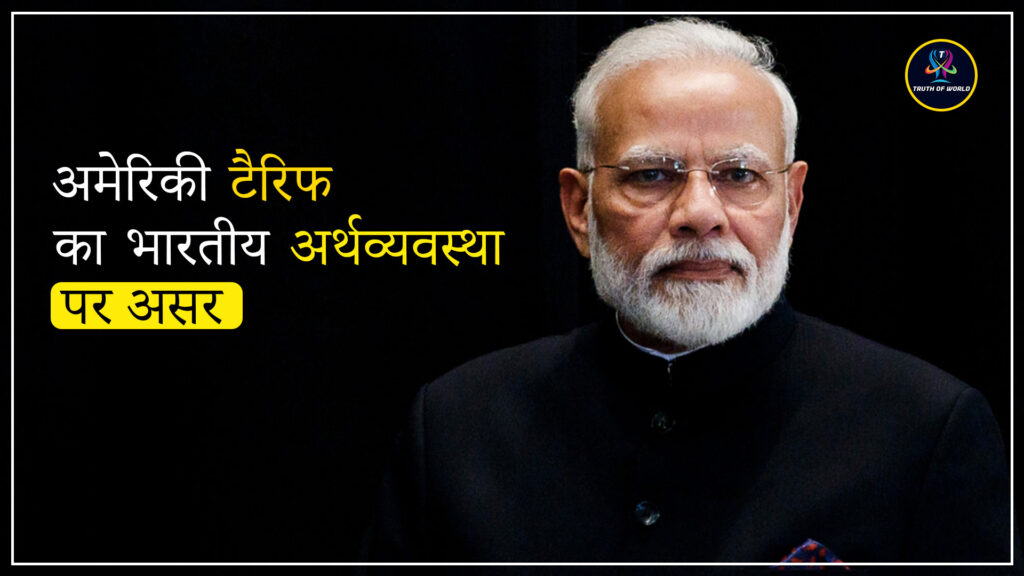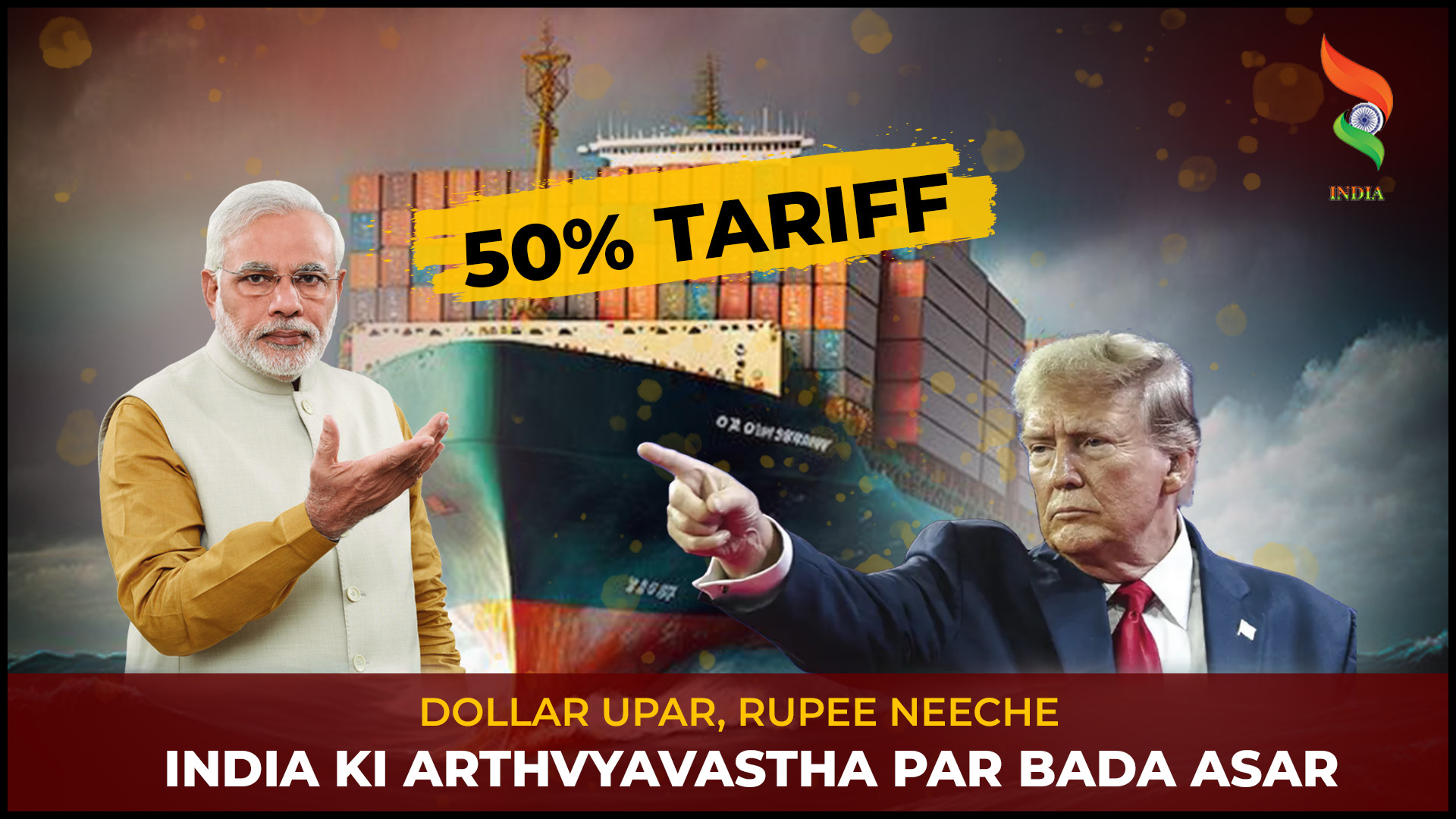Introduction
The global economy thrives on trade relations, diplomacy, and mutual trust between nations. However, when policies take a sharp turn, they can shake markets, weaken currencies, and spark political debates. Recently, the U.S. government announced 50% tariffs on Indian imports, a decision that has triggered an immediate ripple effect—India’s rupee tumbled to record lows, the stock market witnessed a sharp decline, and several industries are bracing for long-term challenges.
Adding to the debate, Baba Ramdev, the well-known yoga guru and business leader, slammed these tariffs as “hooliganism” and urged Indians to boycott American brands like Pepsi, KFC, and McDonald’s. Meanwhile, policymakers in New Delhi are considering GST reforms and tax cuts to cushion the blow and stabilize the economy.
This article takes a deep dive into the issue—exploring the impact of the tariffs, the reactions from the Indian government and public figures, and the road ahead for India’s economic resilience.
Understanding the U.S. Tariffs on India
Tariffs are essentially a tax imposed by one country on imports from another. The 50% tariff on Indian goods is not just a trade policy—it’s a bold political statement. The U.S. claims this step is tied to India’s purchases of Russian oil and its independent trade decisions.
- A wide range of Indian exports now face higher costs in the U.S. market.
- Sectors like textiles, pharmaceuticals, IT services, and agriculture are expected to take a hit.
- The move is seen as a way to pressure India into aligning more with U.S. foreign policy.

Immediate Economic Impact
1. Rupee Hits Record Low
The Indian currency fell sharply against the dollar following the announcement. This depreciation reflects global investors’ lack of confidence in India’s short-term trade balance.
Keywords: India rupee tumble, 50% U.S. tariff
2. Stock Market Tumbles
The BSE Sensex and NSE Nifty witnessed significant drops as foreign investors pulled out money. Export-heavy industries like IT and textiles suffered immediate blows.
3. Rise in Inflation Fears
When tariffs are imposed, the cost of imported goods often increases. With India’s exports facing challenges, trade deficits may widen, leading to inflationary pressure domestically.
Baba Ramdev’s Reaction: Boycott American Brands
One of the loudest reactions came from Baba Ramdev, who called these tariffs an act of economic bullying. He urged Indian citizens to stand united by boycotting U.S. brands like Pepsi, KFC, and McDonald’s.
Why His Voice Matters:
- Baba Ramdev is not only a spiritual leader but also a businessman with a massive consumer base through Patanjali products.
- His call resonates with nationalist sentiments, especially in times of economic pressure.
- Such statements, while symbolic, can influence consumer behavior and shift attention toward Made in India products.
Keywords: Boycott Pepsi KFC by Baba Ramdev, Trump tariffs on India
Government’s Counter Strategy: GST Reforms and Tax Cuts
The Indian government is not sitting idle. To maintain growth momentum, New Delhi is preparing reforms:
1. GST Reforms
- Simplification of the tax structure to reduce burden on businesses.
- Possible rate reductions in certain sectors to keep Indian products competitive.
2. Corporate Tax Cuts
- Policymakers are considering further tax relief for industries heavily dependent on exports.
- Incentives for domestic production could encourage self-reliance (Atmanirbhar Bharat).
3. Strengthening Diplomatic Ties
- While the U.S. relationship is critical, India is simultaneously building closer trade ties with Japan, China, Russia, and Southeast Asia.
- Diversifying trade partners reduces overdependence on any single market.
Keywords: GST reforms to counter U.S. tariffs
Historical Perspective: Trade Wars and India
This is not the first time India has faced tariff-related challenges. Trade wars have been part of global politics for centuries.
- 1980s–90s: U.S. imposed restrictions on Indian textiles.
- 2018–19: The Trump administration raised tariffs on steel and aluminum imports, affecting India.
- 2025: A fresh wave of tariffs has reignited concerns.
India has consistently adapted by expanding into new markets and pushing for domestic production.
Global Reactions to the Tariff Move
The world is watching closely:
- China: Sees opportunity to strengthen trade with India amidst U.S. tensions.
- Europe: Concerned about rising protectionism and potential spillover effects.
- Developing Nations: Many countries see India as a partner resisting unilateral U.S. dominance.
Public Sentiment in India
Social Media Buzz
- Hashtags like #BoycottPepsi and #StandWithIndia are trending.
- Nationalist groups are encouraging citizens to support local brands.
Consumer Behavior
- A possible surge in preference for Indian-made products.
- Awareness campaigns pushing “Vocal for Local.”
The Road Ahead: Can India Withstand the Storm?
Despite the immediate challenges, India has several strengths:
- Large domestic market that can absorb shocks.
- Strong IT and service sector less dependent on U.S. imports.
- Growing trade ties with Asia, Africa, and Europe.
If India successfully pushes GST reforms, tax relief, and diplomatic balancing, the country can turn this crisis into an opportunity.
Q1. Why did the U.S. impose 50% tariffs on Indian imports?
The tariffs are linked to India’s independent oil purchases from Russia and broader trade disagreements.
Q2. How will the tariffs affect the Indian rupee?
The rupee has already seen a record low, as investor confidence weakens due to rising trade deficits.
Q3. What did Baba Ramdev say about the tariffs?
He called them “hooliganism” and urged citizens to boycott American brands like Pepsi, KFC, and McDonald’s.
Q4. How is India responding to the tariffs?
The government is considering GST reforms, tax cuts, and new trade partnerships to minimize the economic impact.
Q5. Will Indian consumers be affected?
Yes. Imported goods may become more expensive, and inflation could rise in the short term.
Conclusion
The 50% U.S. tariffs on Indian imports mark a turning point in global trade relations. While the rupee has tumbled and markets are nervous, India is already strategizing its counter moves—through policy reforms, diversification of trade ties, and boosting domestic resilience.
At the same time, public figures like Baba Ramdev have added a social dimension by urging citizens to boycott American brands, amplifying nationalist voices. The path ahead may be challenging, but with reforms and resilience, India can not only withstand the storm but also emerge stronger in the global economy.
Trending topics around this issue include: US tariffs on India, Baba Ramdev boycott call, GST reforms, and India’s economic response




